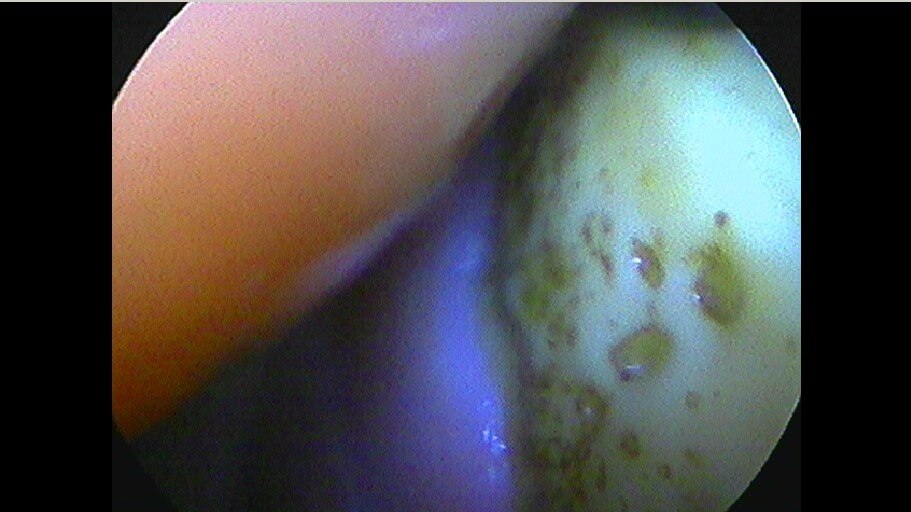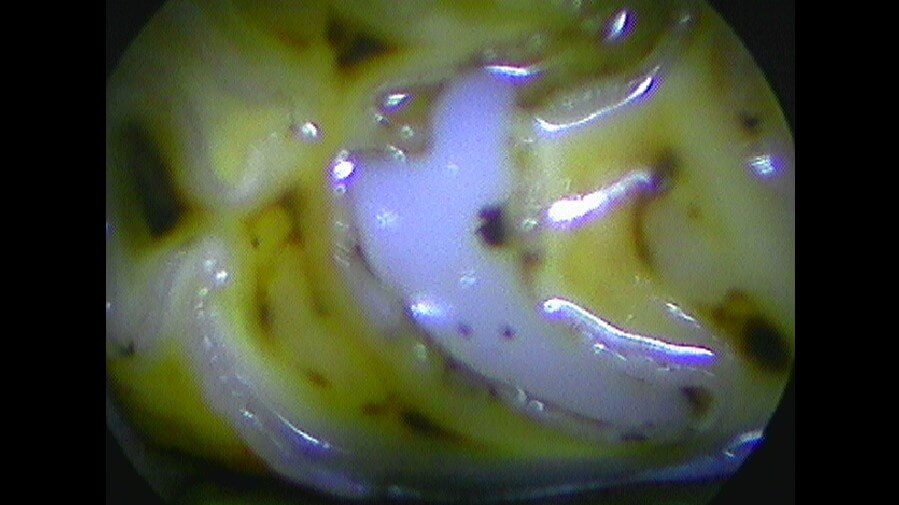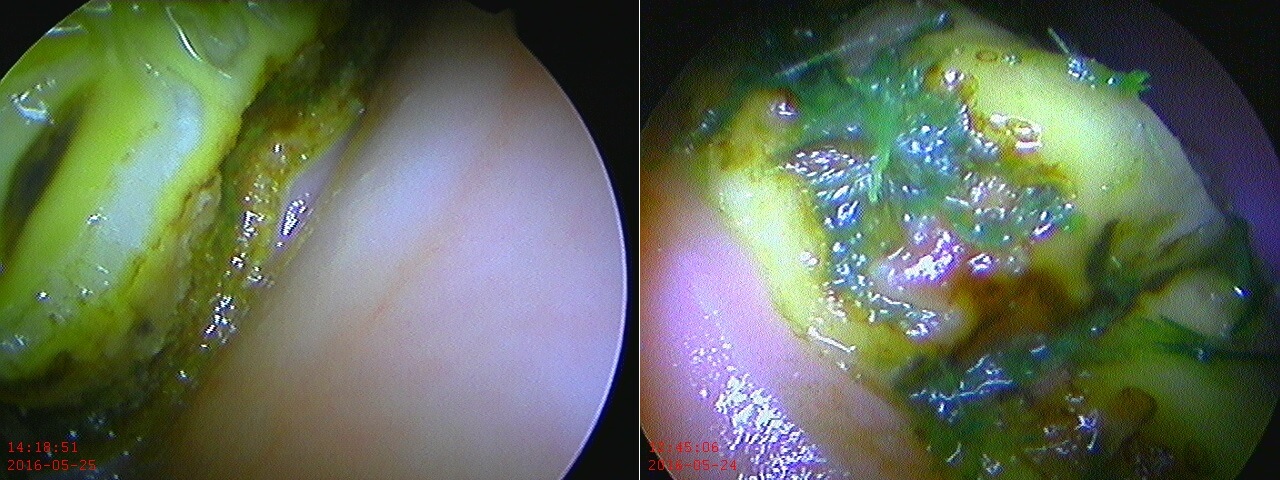Image above: Peripheral Caries of the edge of the tooth forming layers of damage. Note how food adheres to the damaged areas and the discolouration of the teeth
Quite simply Caries are the erosion or decay of tooth or bone. Dental Caries in horses is a relatively recent discovery; however, we are recognising that if identified early, it is possible to prevent more severe dental disease such as fractures and pulp root infections.
In horses, there are 2 different types of caries- peripheral and infundibular.
Peripheral caries describes erosion on the edges of the tooth and can affect any tooth in the mouth. Commonly we see peripheral caries in horses with other dental problems. There may be a link between dental caries and diastema formation (gap between teeth) and associated (painful) gum disease.
The erosion of the tooth causes a roughened surface, which in turn leads to building up of tartar in the area, worsening the damage as well as food sticking to the edges of the teeth and packing around the gum. Advanced peripheral caries can result in chip fractures off the sides of teeth. We see an improvement in peripheral caries when other dental disease is corrected, and over time as the damaged tooth surface is worn away, normal healthy tooth erupts and replaces it (if the horse is sufficiently young enough!) The horse in these photos had significant caries throughout her mouth, all of which resolved within 18 months of careful dental management.

Pitting caries (holes in surface)
Infundibular Caries describes the erosion of the central area of the upper cheek teeth, the infundibulum.
The infundibulum is a funnel like structure (widest at the chewing surface) of the upper teeth, which is filled with cementum, that is softer than enamel. Because the cementum is not as hard, it is more likely to erode- allowing bacteria and food to pack down. This can damage the tooth root thus allowing it to become infected and to die. This also weakens the structure of the tooth, making it more likely to fracture.
Identification of infundibular caries requires careful examination, and often the use of mirrors, lights and probes. We frequently identify cases using our dental endoscope and can monitor the health of the root using x-rays. We grade the severity of the caries, as this gives us a guide for treatment options and helps us monitor the progress of the disease.
As equine endodontics progresses, it is becoming possible to fill and restore these teeth in early cases. This is a very advanced procedure, and requires a referral. In other cases, where the root remains healthy, it is possible to monitor the area for food packing.

Filling – this tooth had infundibular caries. The tooth has been restored by drilling out diseased tissue and filling (white) the space
However, once the tooth has fractured, it is extremely likely that removal of the tooth is the only option. It is important to remember that horses are prey animals, and will normally seem “fine” even with serious dental pathology. Once the damaged tooth is removed owners often notice that their horse’s sparkle has returned!
Last reviewed July 2019
